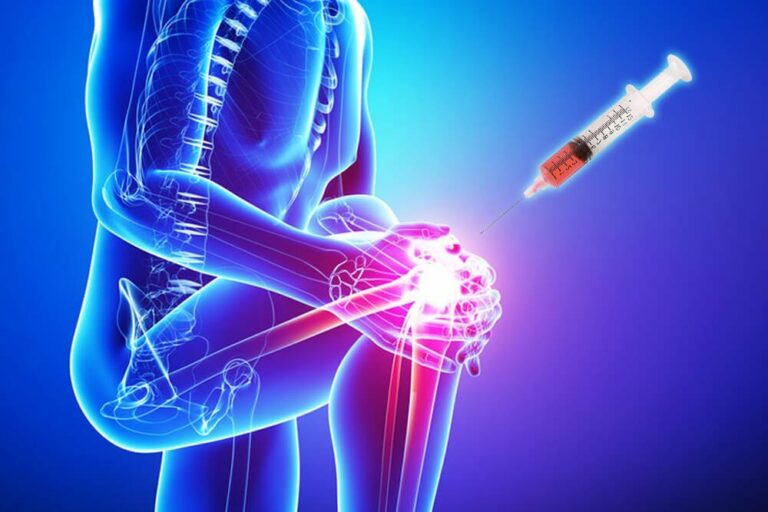Platelet-Rich Plasma (PRP) and Stem Cell Therapy are two regenerative medicine treatments that have gained significant attention in recent years. Both approaches offer promising solutions for tissue repair and regeneration. In this article, we will explore the similarities and differences between PRP and Stem Cell Therapy, and discuss the role of PRP kits.
Understanding PRP Therapy
PRP therapy involves using a patient’s own blood to isolate and concentrate platelets, growth factors, and other bioactive substances. This concentrated solution is then injected into the target area, stimulating tissue repair and regeneration. PRP has been widely used in orthopedics, sports medicine, dermatology, and other fields.
Stem Cell Therapy
Stem Cell Therapy, on the other hand, utilizes stem cells derived from various sources, such as bone marrow, adipose tissue, or umbilical cord blood. These cells possess the unique ability to differentiate into different cell types and promote healing in damaged tissues. Stem Cell Therapy has shown promise in treating a wide range of conditions, including orthopedic injuries, neurodegenerative diseases, and cardiovascular disorders.
Similarities between PRP and Stem Cell Therapy
a) Regenerative Potential: Both PRP and Stem Cell Therapy harness the regenerative potential of the body’s own resources. They aim to enhance the natural healing process by providing concentrated growth factors and bioactive molecules to the injured site.
b) Minimally Invasive: Both treatments are minimally invasive procedures, typically performed on an outpatient basis. This reduces the risks and complications associated with invasive surgical interventions.
c) Autologous Approach: PRP and certain forms of Stem Cell Therapy utilize autologous sources, meaning they use the patient’s own cells or blood components, thereby minimizing the risk of immune rejection or transmission of diseases.
Differences between PRP and Stem Cell Therapy
a) Cell Types: PRP primarily relies on platelets and growth factors obtained from the patient’s blood. In contrast, Stem Cell Therapy involves the use of actual stem cells, which have the potential to differentiate into specialized cell types.
b) Mechanism of Action: PRP exerts its therapeutic effects mainly through the release of growth factors, stimulating tissue repair, and angiogenesis. Stem Cell Therapy, on the other hand, can differentiate into specific cell types, replacing damaged or diseased cells directly.
c) Treatment Spectrum: PRP is widely used in musculoskeletal conditions, such as tendonitis, osteoarthritis, and ligament injuries. Stem Cell Therapy has a broader application range, including orthopedics, neurology, cardiology, and more.
d) Harvesting Process: PRP is typically prepared using specialized PRP kits. These kits enable the separation and concentration of platelets from the patient’s blood, making the process efficient and convenient. In Stem Cell Therapy, stem cells are harvested from the patient’s bone marrow or adipose tissue through a minimally invasive procedure.
The Role of PRP Kits
PRP kits play a crucial role in the preparation of PRP solutions. These kits typically include components for blood collection, centrifugation, and platelet separation. They ensure the isolation of high-quality platelet concentrates that contain the desired growth factors and bioactive substances. PRP kits have significantly contributed to the standardization and reproducibility of PRP therapy.
Centrifugation is a critical step in PRP preparation, and PRP kits often include centrifuge tubes or specialized adapters designed for optimal platelet separation. The centrifuge applies controlled forces to the blood sample, causing the heavier red and white blood cells to settle at the bottom, while the lighter platelets and plasma remain at the top. This separation is essential to obtain a concentrated platelet fraction for therapeutic use.
Platelet separation is facilitated by PRP kits through various methods, such as gravity-based separation or gel-based separation systems. Gravity-based systems use specific tube designs or gel barriers that allow the platelet-rich plasma to be collected from the upper layer after centrifugation. Gel-based systems utilize gel separators that form a physical barrier between the red and white blood cells and the platelet-rich plasma during centrifugation, enabling easier and more efficient platelet isolation.
Selphyl offers innovative PRP kits that give a unique approach to platelet separation. It employs a patented technology called Platelet-Rich Fibrin Matrix (PRFM) to concentrate and activate platelets. PRFM is created by adding a small amount of calcium chloride to the PRP solution, resulting in the formation of a fibrin matrix. This matrix enhances the platelets’ release of growth factors, prolonging their activity and promoting tissue regeneration.
Conclusion
PRP and Stem Cell Therapy are both valuable regenerative medicine approaches with overlapping benefits. While PRP primarily utilizes platelets and growth factors, Stem Cell Therapy involves the use of actual stem cells that can differentiate into various cell types. PRP kits, including innovative systems like Selphyl, have revolutionized the preparation of PRP and contributed to the advancement of regenerative medicine. As research continues, both PRP and Stem Cell Therapy hold great promise for improving patient outcomes and revolutionizing the field of regenerative medicine.
